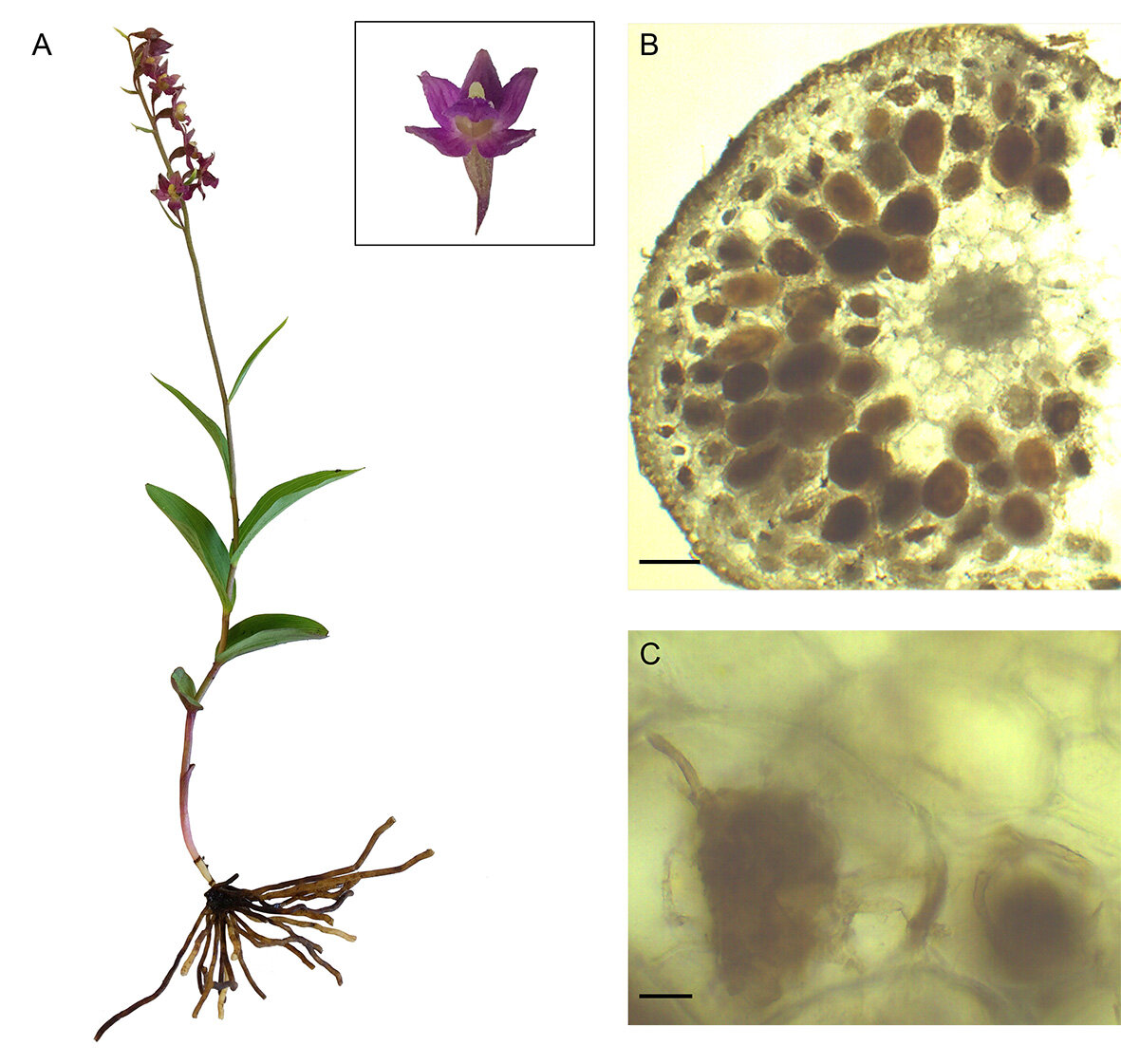
Many plants around the world form symbiotic relationships with fungi, where both partners exchange nutrients. However, some plants unilaterally exploit the fungi for their own benefit.
Prof. Dr. Gerhard Gebauer at the University of Bayreuth, leading international research groups, has introduced a new method in the journal New Phytologist that allows unrestricted isotope analyses of all forms of plant-fungi symbiosis. This breakthrough technique will enable scientists to determine the specific nutrients obtained by each plant from its fungal partner.
The investigation of nutrient extraction by plants from fungi intertwined with their roots provides valuable insights into biodiversity and ecosystem functioning. Carbon, in particular, plays a crucial role as it has been widely believed that plants produce all the carbon they need through photosynthesis, making them autotrophic.
However, it has been discovered that many plants are heterotrophic, relying on symbiosis with fungi, known as mycorrhiza, to obtain carbon from their fungal partners. Some plants have completely ceased photosynthesis and meet all their carbon requirements through this fungal association.
Unrestricted isotope analyses reveal belowground food transfer
For years, researchers have used the distinct isotope profiles of carbon to study the transfer of carbon from fungi to plants. Carbon isotopes, which differ in the number of neutrons in their nucleus, are present in different abundances in plant-produced carbon and fungal carbon.
By analyzing the isotopes stored in plants, scientists can determine the amount of carbon obtained from fungi. However, reliable calculations require the knowledge of two reference values: the isotope profile of carbon in autotrophic plants and the isotope profile of carbon in fungal partners.
Between these two reference values lies the isotopic profile of carbon in heterotrophic plants, which extract carbon from fungi. Isotope analysis has already provided valuable insights into fungal-plant symbioses using this approach.
Opening doors for ecosystem research
Previously, research in this field was limited by the requirement for fungal partners to form fruiting bodies and store carbon within them. However, only about ten percent of fungi in symbiosis with plants form fruiting bodies. As a result, one of the reference values necessary for accurate determination of plant heterotrophy was often missing.
The research team from Bayreuth University has developed a solution to this problem. They have successfully extracted fungal carbon, nitrogen, and hydrogen from the fungal filaments, known as hyphae, intertwined with plant roots.
The recently published studies in New Phytologist highlight various applications of isotope analysis made possible by this new technique. Prof. Dr. Gerhard Gebauer states, “The doors are now wide open for ecosystem research on symbiotic relationships between plants and fungi.”
Case studies on forest plants and orchids
The studies focused on fungi without fruiting bodies involved in arbuscular mycorrhiza with small leafless plants that are completely heterotrophic, incapable of photosynthesis. This symbiotic relationship between plants and fungi is widespread and has a long evolutionary history.
Forest plants from Japan and Australia were provided by research partners to the Bayreuth scientists. They successfully isolated fungal hyphae from the plant root network and prepared them for isotope analysis. This provided the first-ever isotopic data on the fungal partners of arbuscular mycorrhiza with entirely heterotrophic plants.
The researchers also examined orchids native to northeastern Bavaria that form a mycorrhiza with fungi without fruiting bodies. As a comparison, an orchid from Hawaii was included in the study.
Isolating small ball-shaped clusters of hyphae, called pelotons, from the orchid root cells proved to be a challenging task. Preliminary isotope analyses indicate that the selected orchids also extract a significant portion of their nitrogen and other nutrients from the fungi.
More information:
Novel insights into orchid mycorrhiza functioning from stable isotope signatures of fungal pelotons. New Phytologist (2023). DOI: 10.1111/nph.18991. nph.onlinelibrary.wiley.com/do … ll/10.1111/nph.18991
Sofia I.F. Gomes et al.: Stable isotope natural abundances of fungal hyphae extracted from the roots of arbuscular mycorrhizal mycoheterotrophs and rhizoctonia-associated orchids. New Phytologist (2023). DOI: 10.1111/nph.18990. nph.onlinelibrary.wiley.com/do … ll/10.1111/nph.18990
Citation:
When plants feed on fungi: Novel method enables unrestricted isotope analyses (2023, June 22)
retrieved 23 June 2023
from https://phys.org/news/2023-06-fungi-method-enables-unrestricted-isotope.html
This document is subject to copyright. Apart from any fair dealing for the purpose of private study or research, no
part may be reproduced without the written permission. The content is provided for information purposes only.
Denial of responsibility! SamacharCentrl is an automatic aggregator of Global media. In each content, the hyperlink to the primary source is specified. All trademarks belong to their rightful owners, and all materials to their authors. For any complaint, please reach us at – [email protected]. We will take necessary action within 24 hours.

Shambhu Kumar is a science communicator, making complex scientific topics accessible to all. His articles explore breakthroughs in various scientific disciplines, from space exploration to cutting-edge research.

